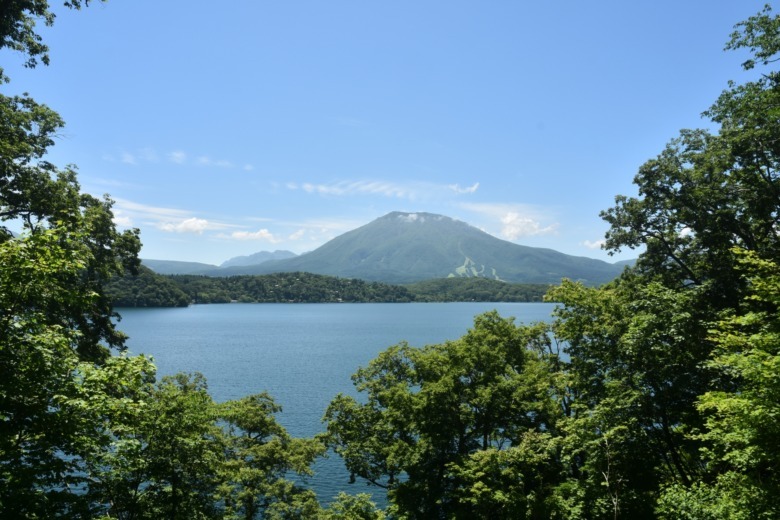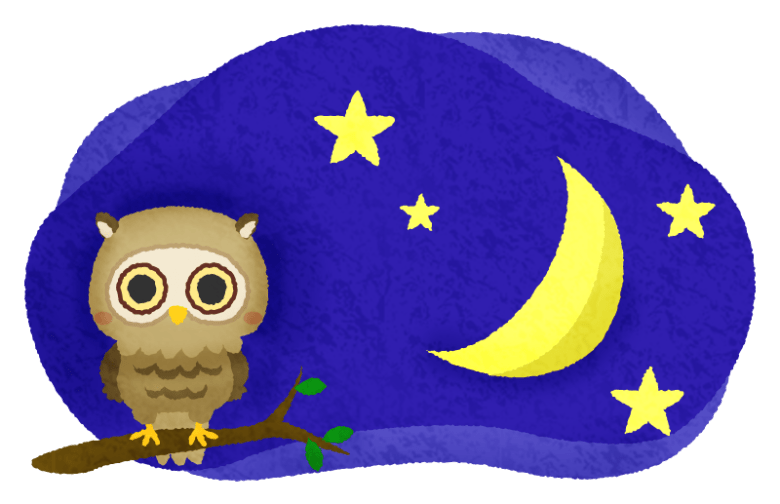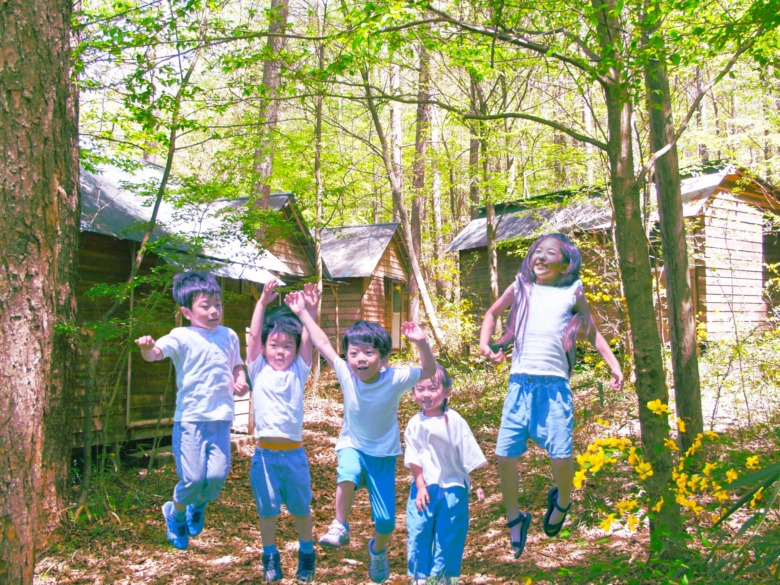Shizuka na kohan
Shizuka na kohan no mori no kage kara
Mou okicha ikaga to kakkou ga naku
kakkou kakkou
kakkou kakkou kakkouYoru mo fuketa yo oshaberi yamete
Oyasumi nasai to fukurou naku
hohho hohho
hohho hohho hohhoLyricist:Unkown(YAMAKITA Takihiko)
Composer:Unkown
in 1936
Quiet lakeside
From the forest shadows by the quiet lakeside
“Time to wake up now!” calls the cuckoo bird
Cuckoo, Cuckoo
Cuckoo, Cuckoo, Cuckoo
Night is growing late, time to stop your chatter
“Good night everyone,” calls the owl so softly
Hoo-hoo, Hoo-hoo
Hoo-hoo, Hoo-hoo, Hoo-hoo

“Shizuka na Kohan” – Origins and Mysterious Background
“Shizuka na Kohan no Mori no Kage Kara” (From the Forest Shadows of the Quiet Lakeside) is a children’s song believed to have been created in 1936 at the YMCA Nojiri Lake Camp. Lake Nojiri is a beautiful lake straddling Shinano-machi in Kamiminochi District and Nagano City in northern Nagano Prefecture. Located at an elevation of 654 meters in the highlands about an hour’s drive from Karuizawa, this lake remains cool even in summer—truly the perfect camping environment.

Lake Nojiri ( Nojiri-ko )
The song’s title can be written as either “Shizuka na kohan” or “Shizuka na kohan no mori no kage kara,” and this casual flexibility is part of its charm. The lyricist is credited as YAMAKITA Takihiko, but various versions of the lyrics exist, and the true author is often considered unknown.
Interestingly, the original melody is said to be either a Swiss or French folk song, but the actual country of origin remains unclear. Perhaps it’s precisely because this melody has been beloved and sung across so many European countries that it has become so cherished in Japan as well.
Incidentally, there’s also Lake Nozori in Gunma Prefecture, known as the “Lake in the Sky” at 1,500 meters elevation, but this lake has no connection to our children’s song.
Lyrical Structure and Why It’s So Beloved
The most famous part of this song is the first verse: “Shizuka na kohan no mori no kage kara, mou okicha ikaga to kakkou ga naku, kakkou, kakkou” (From the forest shadows of the quiet lakeside, the cuckoo calls ‘won’t you wake up now?’ Cuckoo, cuckoo). Most Japanese people could probably hum along to this part.
The cuckoo(Cuculus canorus) is a migratory bird known for its distinctive “cuckoo” call, and in Japan it’s cherished as a herald of early summer. The lyrical expression of the cuckoo calling out “won’t you wake up now?” demonstrates the beautiful Japanese use of personification.
Actually, there are subsequent verses featuring owl sounds like “hoo-hoo, hoo-hoo,” but unfortunately these are rarely sung. The first verse alone became overwhelmingly popular because of the rhythmic simplicity of the “cuckoo, cuckoo” refrain and the way it conveys the refreshing feeling of a highland morning. It really gets you excited for the camping adventure ahead!

Cultural Spread Through Singing in Transit
When people think of “Shizuka na Kohan,” many probably remember singing it in buses on the way to school camps or nature retreats. While it’s sometimes sung around campfires, it’s actually more commonly heard during travel—in buses and trains.
Gazing out at the flowing green scenery while everyone sings “cuckoo, cuckoo” together—many people have experienced this. This song has a mysterious power: as you sing it, spirits naturally lift and the distance between participants seems to shrink.
When outdoor activities became popular in postwar Japan, this song was actively sung in Boy Scouts, Girl Scouts, and school nature programs. It’s also beloved in kindergartens and nursery schools as a seasonal song, playing an important role as children’s first introduction to nature.

Contemporary Significance and International Value
In our digital age, the value of “Shizuka na Kohan” shines even brighter. Rather than staring at smartphone screens, this song invites us to look at the blue sky reflected on lake surfaces and the green of forests. It continues to serve as an important gateway to such experiences.
For foreign visitors, this song offers a fascinating glimpse into Japanese attitudes toward nature. With about 70% of Japan’s land consisting of mountains and forests, this geographical feature has nurtured the Japanese people’s delicate sensitivity to nature. The ability to find beauty in “quietness” and to listen carefully to birdsong represents a uniquely Japanese forest culture.
The unknown authorship is also intriguing. While created by an individual, it has been passed down and sung by many people, gradually changing while continuing to be loved. This perhaps represents the very life force of folk songs and traditional culture.
Even today, somewhere in Japan, children are probably humming this song while riding in a bus. The little song born at Lake Nojiri continues to color new generations’ summer memories nearly 90 years later.




コメント